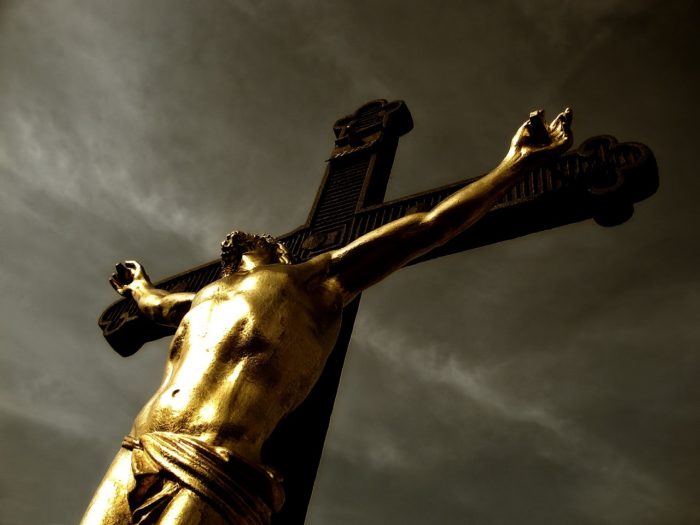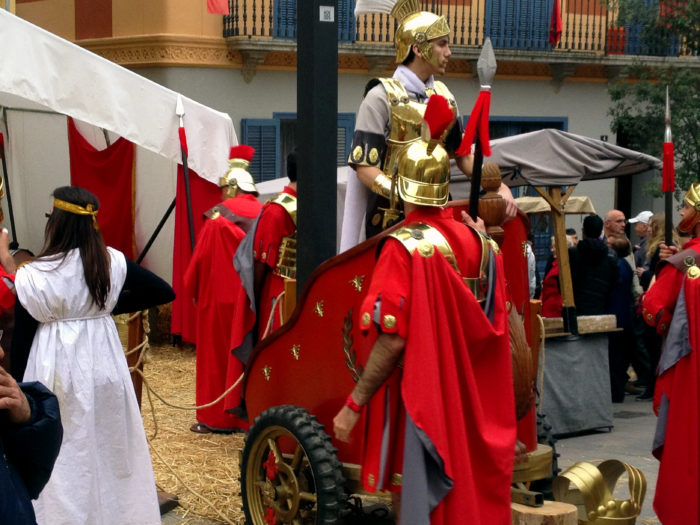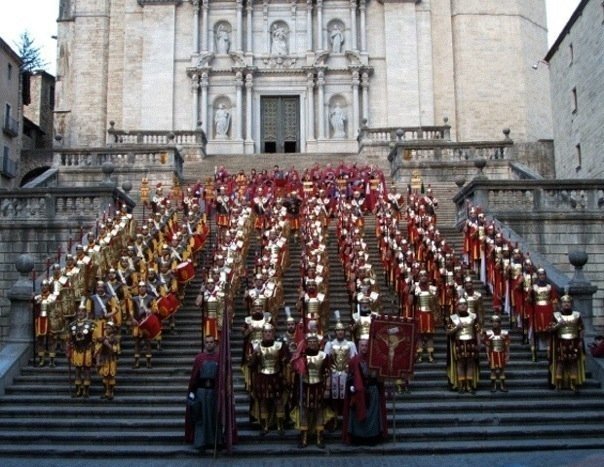A look at how Easter is celebrated on the Costa Brava and what to see and do.

Jesus on the cross (Jingoba/Pixabay)
As Spain is nominally a Catholic country you might expect to find Easter widely celebrated on the Costa Brava. But these days Easter is really celebrated as a secular holiday by most people – some welcome days off work.
Good Friday, Easter Sunday and Easter Monday are all public holidays in Catalonia. That means outside the main tourist towns many shops and restaurants will be closed.
Easter traditions
Palm Sunday marks the start of the setmana santa, commemorating the arrival of Christ in Jerusalem.
Catalonia isn’t particularly religious but Easter fairs and markets often take place on Palm Sunday and there are processions in some towns. In general though, you’re unlikely to notice much going on then unless you attend mass. And while Good Friday processions were once a common sight in Catalonia, these days you’ll need to go to Girona or Sant Hilari Sacalm.
In the Ampurdan it’s traditional to eat a type of rather dense doughnut flavoured with anise. They’re called brunyols and I’m not really a fan. My Catalan friends love them though! It’s also traditional to eat mona de pasqua, an Easter cake that was originally topped by hard boiled eggs. These days it’s more likely to have chocolate ones, although Easter Eggs aren’t as common in Spain as they are in the UK.
What’s on where at Easter?
There are a small number of events taking place over Easter, the most famous of which is la dansa de la mort in Verges on the night of Maundy Thursday.
Llagostera Mercat Romà
Every year since 2007 Llagostera has held a Roman market with stalls selling artisanal produce. Initially in the area near the town’s sports centre, these days it takes place in the old town in the lead up to Easter.

Roman soldiers at Llagostera’s Mercat Romà (David Leigh)
As well as parades of Roman soldiers you can see mock gladiator fights, juggling displays and sample Roman food. During the Roman market the town also opens up the medieval watchtower and church bell tower to the public.
According to Llagostera’s website the Roman market takes place on Palm Sunday (24th March 2024) but sometimes it takes place a fortnight before Easter Day (17th March 2024).
Although it isn’t updated well in advance you can check here for information or see if the date has been announced here.
Manaies de Girona
In Girona on Good Friday you can watch a formation of 120 Roman soldiers parading through the town.

Roman soldiers on the steps of Girona Cathedral (Wikimedia)
Headed by riders on horseback, the parade includes a band playing fife and drums as the soldiers bang their spears on the ground. The parade starts at 10pm at the cathedral steps and passes through the old town before arriving back at the cathedral at around midnight.
On the Wednesday before Easter you can see the soldiers carry their flag from the church of Sant Lluc to the home of the standard bearer for Friday’s event. In 2019 it was announced that women could take part in the parade for the first time. Click here to confirm dates and times (in Catalan).
Vía Crucis Vivent
Sant Hilari Sacalm is another town where you can still see an Good Friday parade. The vía crucis vivent – route of the living crucifix – is a parade that dates back nearly three centuries. Starting at 9pm, a group of Roman soldiers accompanies Jesus around the town as he carries his cross.
Verges Dance of Death
While many towns have Easter fairs and parades, Verges celebrates in a way you’re unlikely to experience anywhere else. The town celebrates the Maundy Thursday with a parade, first documented in 1666, that includes la dansa de la mort – the dance of death.
The evening starts with a parade of Roman soldiers through the town followed by, in the main square at 10pm, a reenactment of Jesus being condemned to death and the lead up to his crucifixion.
At midnight a parade makes its way through the town’s medieval quarter. It is made of of Roman soldiers armed with spears, penitents with their pointed hats, saints on carriages, the Virgin Mary and Jesus carrying his cross.
The parade is best known for the dance of death, in which figures dresses as skeletons dance to a drum, as seen in the video above. A similar, shorter performance for children also takes place on the afternoon of Easter Sunday.
If you’re visiting the Costa Brava over Easter and want to check out this eerie spectacle you need to buy tickets to attend.
Palamós Easter Swim
If you’re in Palamós and can brave the water temperature then you might like to don your swimming gear for the town’s Easter Sunday swim.
If you want to take part (or just want to watch) you should head down to the beach at 11:30 for el primer bany de l’any (the first swim of the year) at midday. Afterwards all participants are served a cup of broth. You’ll probably need it!

